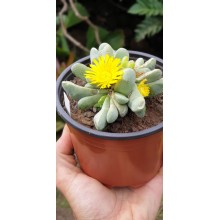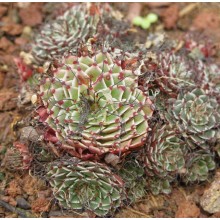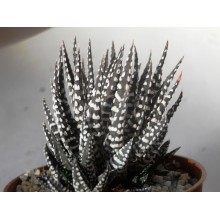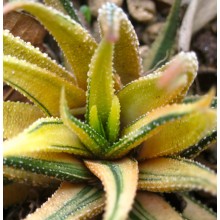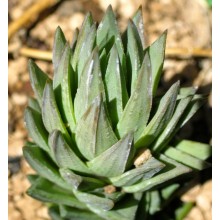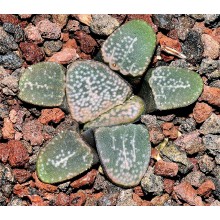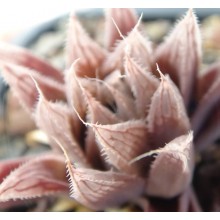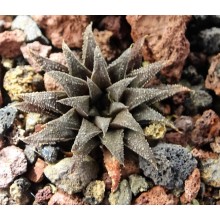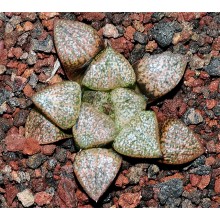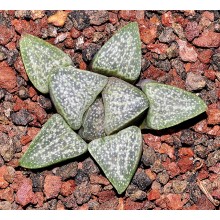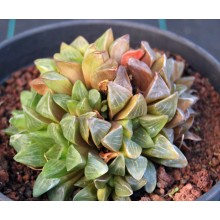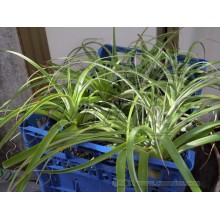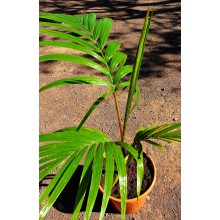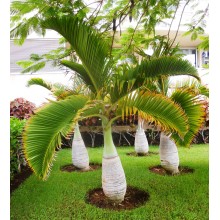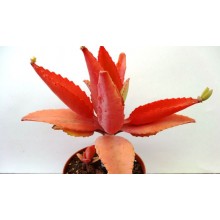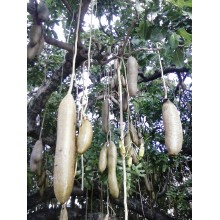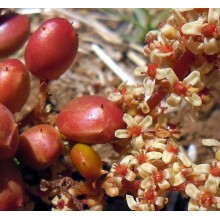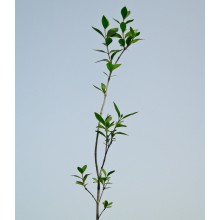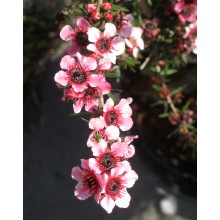Plantas Resistentes a la sequía Hay 140 productos.

En esta sección agrupamos aquellas plantas que se adaptan a las condiciones áridas o de sequía. Normalmente, la mayoría de estas especies, que se cultivan en condiciones áridas, tienen hojas cerosas, suculentas, peludas, pegajosas, tipo agujas, o incluso, más pequeñas que el resto.
En Plantas resistentes a la sequía se puede encontrar cualquier especie con estas características: Pithecellobium dulce, Ruta graveolens, Syzygium cordatum, Tamarindus indica y así sucesivamente.
-
Glottiphyllum oligocarpum
Glottiphyllum oligocarpum
This is a very attractive compact and blue glotty. Leaves are short and waxy and can look blue to grey. The flowers are so large that they cover the whole rosette.
12,00 € -
Graptopetalum filiferum
Graptopetalum filiferum
Rooted rosette. This graptopetalum with jade-green leaves is so compact that it resembles a Sempervivum. It is native to Chihuahua , in Mexico and flowers in Winter. It branches very slowly and will eventually fill the pot and form a solid mat.
23,20 € -
Haworthia attenuata 'Big Band'
Haworthia attenuata 'Big Band'
Supreme selection of the popular Haworthia fasciata. Big Band has white, prominent bands of dots. Leaves turn brown to black in high light, showing a beautiful black and white contrast!
10,40 € -
Haworthia attenuata 'Rainbow'
Haworthia attenuata 'Rainbow'
A supreme variegated clone of attenuata-radula, with different colour shades in each rosette.
12,70 € -
Haworthia glauca herrei
Haworthia glauca herrei
Beautiful Haworthia with glaucous leaves, native to the Eastern Cape, adapted to full sun. It is clumping and stem forming, so it will eventually form a large attractive specimen.
10,40 € -
Haworthia leightonii
Haworthia leightonii
This Haworthia forms large clumps and develops a bright red colour when stressed by sunlight. It was formerly classified Haworthia cooperi var leightonii and it is the easternmost population of the cooperi group.
17,60 € -
Haworthia x 'Cup of Gold'
Haworthia x 'Cup of Gold'
Haworthia ‘Cup of Gold’ is a Haworthia with pale yellow retuse leaves, possibly a selection or hybrid of H. otzeniana. Some people consider it variegated, though the variegation s just on the reverse of the leaves and it is not always evident.
10,80 € -
Hechtia tillandsioides
Hechtia tillandsioides
This is an unusual and elegant terrestrial bromeliad with spineless silvery leaves. Leaves are soft and velvety to touch. Established plants will bloom with huge "sprays" of pink flowers. Hechtia tillandsioides is native to Mexico (States of Hidalgo and Mexico). It takes frost and feels at home in Mediterranean climates !
21,50 € -
Hyophorbe indica 'Red'
Hyophorbe indica 'Red'
This palm is a great ornamental. It is very beautiful as a juvenile because of the reddish stem and petioles. They are very fast when young.
46,20 € -
Hyophorbe lagenicaulis - Bottle Palm
Hyophorbe lagenicaulis - Bottle Palm
h= 30-60 cm - Cont. 14-16 cm. Distinctive small palm, with a grey bottle-shaped trunk. Hyophorbe lagenicaulis has a waxy green crownshaft and elegant, arching pinnate leaves. Be careful, it is damaged or killed by frost, nevertheless it is a naturally short species that can live for years in a container.
62,30 € -
Lannea edulis
Lannea edulis
This species bears edible fruits and it grows just 20-50 cm tall. with a thick underground trunk or caudex, which helps it to survive drought and fires. Sometimes it is called the "underground tree".
92,30 € -
Lawsonia alba - Henna
Lawsonia alba - Henna
Henna is the most ancient dye, widely used from Northern Africa to India. It is a compact bushy tough shrub that can take frost to drought.
35,00 € -
Leptospermum scoparium - Manuka Tea Tree
Leptospermum scoparium - Manuka Tea Tree
Elegant evergreen shrub with deep green fragrant leaves that bears small flowers of white to pink in colour. It is resistant to moderate frost. This plant is called Manuka and it is known for medicinal purposes but also because it makes a special bee honey. There are also reports of therapeutic properties.
19,80 €
En estos momentos tenemos pocos productos en esta categoría Plantas Resistentes a la sequía

















